This story is an excerpt from the book ALABAMA FOOTPRINTS Exploration: Lost & Forgotten Stories (Volume 1) continued below….
Note: this story has been transcribed exactly as written before 1900. Please consider the time period in which it was written.
Near the prairies, within a few miles of this solitary woman, (in the area of present day Montgomery, Alabama – see Milly of Montgomery story) lived William Gregory, a native of one of the States, who had resided for years among the Indians. He was now a stock-keeper, and lived in a cabin, which contained his Indian family.
Rolling plains as far as the eye could see
As far as the eye could reach over the beautiful and gently rolling plains, his cattle and horses fed, undisturbed by man or beast. It is said that William Gregory was a kind-hearted man, who fed the wanderer “without money and without price,” and who, even in a lawless land, possessed a heart which prompted him to be honest.
In 1785 came also into this neighborhood a Jew, named Abram Mordecai, a native of Pennsylvania, and who established a trading house at the spot where now stands the house of Mrs. Birch, two miles west of Line Creek.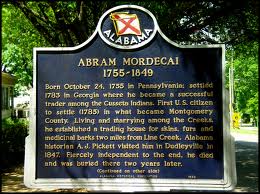
James Russell was a Tory
Here also lived James Russell, another trader, who, being a Tory, had sought this place to be rid of Whig persecution. A Tory, named Love, and Dargan, a Dutchman and notorious horse thief, lived near the site of Mount Megs, where they carried on a small commerce. All these traders had Indian wives except Mordecai, whose faithful spouse was Indian considerably darkened with the blood of Ham.
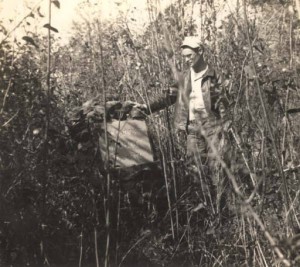
Charles Weatherford established a trading house
At Econchate, Red Ground; now embracing the southern suburbs of the city of Montgomery, lived several white traders. Charles Weatherford established a trading house upon the first eastern bluff below the confluence of the Coosa and Tallapoosa, and laid out the first race-paths ever known in East Alabama. Often would the noted horse thief, fresh from the frontiers of Georgia, here for the first time try the speed of his stolen ponies.
Savannah Jack was a cruel white man
The most blood-thirsty, fiendish and cruel white man that ever inhabited any country was Savannah Jack, or, as be was universally called by this outlawed world, 1792 “Savaner Jack” who lived at Souvanoga, upon the Tallapoosa. He boasted that he had killed so many women and children, upon the Cumberland and Georgia frontiers, in company with his town’s people, that he could swim in their blood if it was collected in one pool. Thus me see that the territory of Montgomery county, now the focus of so much wealth and intelligence, was then a wilderness, inhabited by Indians and the few singular characters who have been named.
This may be the location of Souvanoga mentioned in the story
Indeed, all over the territory of Alabama and Mississippi, wherever an Indian town of importance was found, white traders lived. Some of them became wealthy, but like all property acquired in a commerce with Indians, it generally left the owner in his old age.
One of these up-country traders, “Woccocoie Clarke” living at Woccocoie, in the modern Coosa county, transported his merchandise and skins upon seventy pack-horses. His squaw, who was of great assistance to him, he called Queen Anne, for Clarke was an Englishman.
SOURCES
- transcribed from History of Alabama and Incidentally of Georgia and Mississippi from the Earliest Period by Albert James Pickett 1900
ALABAMA FOOTPRINTS Exploration: Lost & Forgotten Stories (Volume 1)
Alabama Footprints – Exploration – is a collection of lost and forgotten stories about the people who discovered and initially settled in Alabama.
Stories include:
First Mardi Gras in America
The Mississippi Bubble Burst
Royalists settle in Alabama
Sophia McGillivray- A Remarkable Woman
The Federal Road – Alabama’s First Interstate


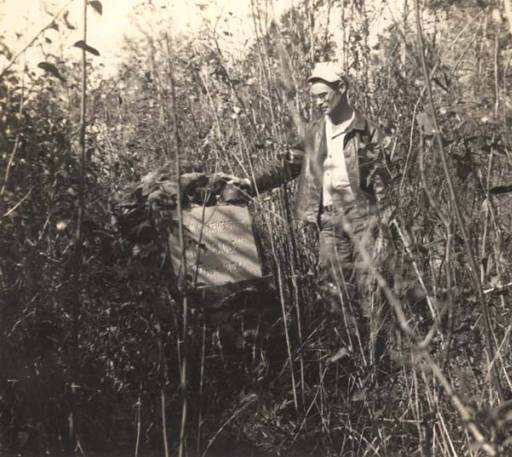
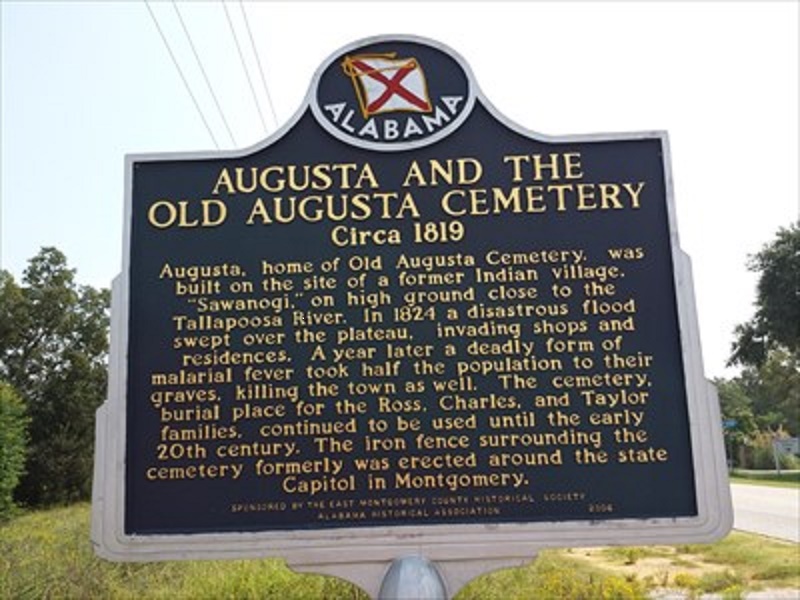

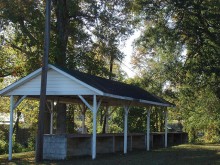
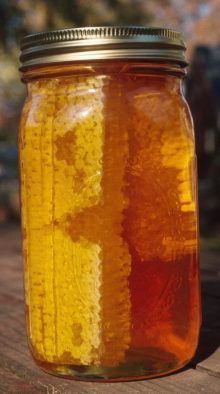
Where is the rest of this story? Is there more?
You can find the rest of the story by clicking the post image to or this link http://alabamapioneers.com/traders-william-gregory-james-russell-and-abram-mordecai-in-early-alabama/
I think we do the kids of today a disservice for not teaching more History today !!!!!!!!!!!!!!!!!!!!!!!!!!!!!!!!!!!
Interesting! Thanks!
I love your blog! Enjoy reading about days gone by. I am trying to locate a book my dad has talked about for years, “Tory’s of the Hills”. ( Not sure about spelling) Some of our family members are listed in the book. I don’t know who wrote it or when it was published, but I remember Papa talking about when I was younger. He was very proud that he had a ‘signed’ copy. He loaned the book to someone who never
returned it. Papa is 92 yrs. old now, and I would love to give him a copy of the stories he loved so much. He grew up in Fayette County, Alabama, if that helps. Any information appreciated!
Is this the book you are referring to? It seems to be very rare. http://amzn.to/1Qz2lc7
Try “Tories of the Hills” by Wesley Sylvester Thompson.. Hope this helps- Terri
http://amzn.to/1WpIC73
Pat: My father was from Hubbertville and would be 95. I had heard of “Tories of the Hills” all my life. I finally got it through inter library loan and read it this spring. Go to your local library and ask them to help you with this. It was $5 to cover transport. My Cottons and Wests had divided loyalties during the late unpleasantness. I would love to have a copy of the book, but I am glad I took 15 minutes and $5 to finally get it and read it. It was such a violent time. Sometimes I wonder how our ancestors survived.
This is a very informative site. It’s a shame it is so poorly edited and proofread.
Thank you for your comment. I’m sorry you feel this way. I am only one person and if I hired an editor, http://www.alabamapioneeers.com would not be able to remain FREE. This story, as well as many others on the website, have been transcribed from old, out-of-print books. The words have been transcribed exactly as written on purpose. There are usually many errors in these old texts, but I have not corrected them so the words can remain as close as possible to the original text. Instead, I always include a disclosure in the beginning. Donna
Donna: Thank you for all that you do!
Thanks Marie!
Love the post exactly as the way it was orignially written. Most of us “get it.” Thank you so very much!
Thanks Phyllis!
Where or how can I find information about Negros in the 1800’s in Bullock Co, Alabama? Also, I noticed a long listing of farmers and helpers on the 1930 census all residing at 930 Midway, Midway, Bullock, Alabama. What was or is at that address? I’m trying to do family research for a friend.
Names are King, Ginyard, Arnold, Cobb, Snipes, Williams.
Thank you,